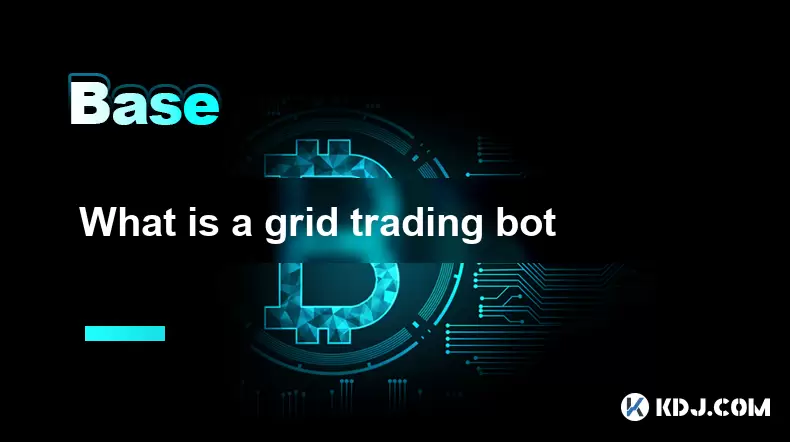-
 Bitcoin
Bitcoin $119,161.9671
1.52% -
 Ethereum
Ethereum $2,995.0722
2.34% -
 XRP
XRP $2.8555
5.32% -
 Tether USDt
Tether USDt $1.0002
0.00% -
 BNB
BNB $692.9308
1.48% -
 Solana
Solana $162.9611
1.87% -
 USDC
USDC $0.9999
0.00% -
 Dogecoin
Dogecoin $0.2014
2.84% -
 TRON
TRON $0.3032
0.90% -
 Cardano
Cardano $0.7464
6.51% -
 Hyperliquid
Hyperliquid $49.1533
5.71% -
 Stellar
Stellar $0.4773
24.77% -
 Sui
Sui $3.4979
3.93% -
 Chainlink
Chainlink $15.8552
6.01% -
 Hedera
Hedera $0.2401
23.85% -
 Bitcoin Cash
Bitcoin Cash $510.0474
0.97% -
 Avalanche
Avalanche $21.5550
4.82% -
 UNUS SED LEO
UNUS SED LEO $9.0389
-0.47% -
 Shiba Inu
Shiba Inu $0.0...01340
2.27% -
 Toncoin
Toncoin $2.9910
0.62% -
 Litecoin
Litecoin $96.4406
4.34% -
 Polkadot
Polkadot $4.0359
4.59% -
 Monero
Monero $338.4759
2.80% -
 Uniswap
Uniswap $8.6460
4.01% -
 Dai
Dai $0.9999
0.00% -
 Ethena USDe
Ethena USDe $1.0007
0.03% -
 Pepe
Pepe $0.0...01254
3.26% -
 Bitget Token
Bitget Token $4.3969
0.79% -
 Aave
Aave $312.2641
3.98% -
 Bittensor
Bittensor $397.0731
4.17%
What is a grid trading bot
A grid trading bot automates trades by placing buy and sell orders within a set price range, profiting from market volatility through repeated transactions.
Jul 14, 2025 at 02:00 am

Understanding the Concept of a Grid Trading Bot
A grid trading bot is an automated trading system designed to execute trades based on a predefined price grid. This strategy involves placing multiple buy and sell orders at different price levels within a specified range. The core idea behind this method is to profit from market volatility by capturing small price movements. Unlike traditional trading bots that may follow trend-based strategies, a grid trading bot thrives in sideways or ranging markets.
The bot operates by setting upper and lower bounds for a cryptocurrency pair, such as BTC/USDT or ETH/USDT. Within this range, it places buy orders below the current market price and sell orders above it, forming a "grid" of trades. As the price fluctuates, the bot executes these trades, accumulating profits from the difference between buying low and selling high.
Important:
The success of a grid trading bot heavily depends on proper configuration of grid parameters, including the number of grids, price range, and trade size.How a Grid Trading Bot Operates
To understand how a grid trading bot functions, consider the following scenario: suppose the current price of Ethereum (ETH) is $2,000. A user sets a grid range between $1,950 and $2,050 with 10 grid levels. The bot will then place 10 buy orders at decreasing intervals from $2,000 down to $1,950 and 10 sell orders at increasing intervals from $2,000 up to $2,050.
As the price moves upward, the bot sells at each set level, realizing profit. When the price drops, it buys more coins at lower levels. This continuous cycle allows traders to accumulate gains through repeated transactions.
- Buy orders are placed below the current market price, waiting for dips.
- Sell orders are placed above the current price, capitalizing on short-term rallies.
- The bot automatically adjusts positions once a trade is executed.
This process repeats continuously as long as the price remains within the defined grid range.
Setting Up a Grid Trading Bot
Configuring a grid trading bot requires careful planning and understanding of market conditions. Most exchanges and third-party platforms offer built-in tools for creating grid bots. Here's how to set one up:
- Select a trading pair like BTC/USDT or ETH/USDT depending on your preference.
- Define the price range where you expect the asset to oscillate.
- Set the number of grid levels — more levels mean tighter spacing but smaller profits per trade.
- Determine the investment amount allocated to the bot for buying and selling.
- Enable leverage if supported, though this increases risk.
After entering these parameters, the bot begins executing trades automatically. Some platforms allow users to monitor performance in real-time and adjust settings as needed.
Advantages of Using a Grid Trading Bot
There are several benefits associated with using a grid trading bot, especially in volatile markets:
- Profit from sideways markets where traditional trend-following bots struggle.
- Automated execution eliminates emotional decision-making and ensures consistent trading.
- Multiple trades per grid cycle can generate steady income over time.
- Customizable parameters allow adaptation to different market conditions and assets.
Additionally, since the bot operates without human intervention, it can function 24/7, taking advantage of opportunities even when the trader is offline.
Potential Risks and Limitations
Despite its advantages, a grid trading bot is not without risks. One major drawback occurs when the price breaks out of the defined grid range. If the price rises significantly beyond the highest sell order or falls sharply below the lowest buy order, the bot stops functioning effectively.
- Market breakout risk can lead to missed opportunities or losses if not managed properly.
- Capital lock-up happens when large amounts are invested in pending orders, reducing flexibility.
- Slippage and fees can erode profits, especially in low-liquidity markets.
- Improper configuration can result in losses instead of gains.
Traders should regularly monitor their grid bots and adjust parameters based on changing market dynamics.
Frequently Asked Questions
Can I use a grid trading bot for any cryptocurrency?
Yes, as long as the cryptocurrency has sufficient liquidity and is available on a platform that supports grid trading, you can deploy a grid bot. However, highly volatile or illiquid pairs may not be suitable due to increased slippage and execution risk.
Is grid trading profitable in bear markets?
Grid trading can still be profitable in bear markets if configured correctly. It works best in sideways or slightly trending environments. In strong downtrends, however, the bot may suffer losses unless the grid is adjusted downward or paused.
Do I need to constantly monitor my grid trading bot?
While the bot operates autonomously, regular monitoring is recommended. Checking performance metrics, adjusting grids during significant price movements, and ensuring sufficient funds are crucial for maintaining profitability.
Can I backtest a grid trading strategy before live deployment?
Many platforms offer backtesting features for grid trading strategies. This allows traders to simulate historical performance and tweak parameters before risking real capital.
Disclaimer:info@kdj.com
The information provided is not trading advice. kdj.com does not assume any responsibility for any investments made based on the information provided in this article. Cryptocurrencies are highly volatile and it is highly recommended that you invest with caution after thorough research!
If you believe that the content used on this website infringes your copyright, please contact us immediately (info@kdj.com) and we will delete it promptly.
- Ruvi AI: The Audited Token Primed for 100x Gem Status
- 2025-07-14 06:50:12
- Bitcoin's New Highs: Retail Interest and the Allure of Crypto Presales
- 2025-07-14 07:10:11
- Dogwifhat (WIF) Price Prediction: Bullish MACD Signals Potential Breakout
- 2025-07-14 07:10:11
- BlockDAG's Bold Moves: Token Unlock Sparks User Activity Surge
- 2025-07-14 07:15:11
- Blockchain, DAG, and Scalability: A New Era of Crypto?
- 2025-07-14 07:15:11
- Real-World Assets, Tokens, and ETFs: A New Era of Investment?
- 2025-07-14 07:20:12
Related knowledge

What is the Bitcoin dominance index
Jul 12,2025 at 10:35pm
Understanding the Bitcoin Dominance IndexThe Bitcoin Dominance Index, often abbreviated as BTC.D, is a metric used to measure Bitcoin's market capital...

What is the Bitcoin dominance index
Jul 11,2025 at 04:29am
What is the Bitcoin Dominance Index?The Bitcoin Dominance Index is a metric used to gauge Bitcoin's market capitalization relative to the total market...

Can crypto be a hedge against inflation
Jul 14,2025 at 12:21am
Understanding the Concept of Hedging Against InflationInflation refers to the general increase in prices and fall in the purchasing value of money ove...

Can crypto be a hedge against inflation
Jul 12,2025 at 12:07pm
Understanding the Role of Blockchain in Decentralized Finance (DeFi)Blockchain technology serves as the backbone of decentralized finance, offering a ...

What are account abstraction wallets
Jul 13,2025 at 01:43am
Understanding the Concept of Account AbstractionAccount abstraction is a term frequently used in the Ethereum ecosystem, particularly within discussio...

What does "gas limit" vs "gas price" mean
Jul 13,2025 at 04:00am
Understanding the Basics of Gas in Blockchain TransactionsIn the Ethereum and other EVM-compatible blockchains, every transaction requires computation...

What is the Bitcoin dominance index
Jul 12,2025 at 10:35pm
Understanding the Bitcoin Dominance IndexThe Bitcoin Dominance Index, often abbreviated as BTC.D, is a metric used to measure Bitcoin's market capital...

What is the Bitcoin dominance index
Jul 11,2025 at 04:29am
What is the Bitcoin Dominance Index?The Bitcoin Dominance Index is a metric used to gauge Bitcoin's market capitalization relative to the total market...

Can crypto be a hedge against inflation
Jul 14,2025 at 12:21am
Understanding the Concept of Hedging Against InflationInflation refers to the general increase in prices and fall in the purchasing value of money ove...

Can crypto be a hedge against inflation
Jul 12,2025 at 12:07pm
Understanding the Role of Blockchain in Decentralized Finance (DeFi)Blockchain technology serves as the backbone of decentralized finance, offering a ...

What are account abstraction wallets
Jul 13,2025 at 01:43am
Understanding the Concept of Account AbstractionAccount abstraction is a term frequently used in the Ethereum ecosystem, particularly within discussio...

What does "gas limit" vs "gas price" mean
Jul 13,2025 at 04:00am
Understanding the Basics of Gas in Blockchain TransactionsIn the Ethereum and other EVM-compatible blockchains, every transaction requires computation...
See all articles
























































































